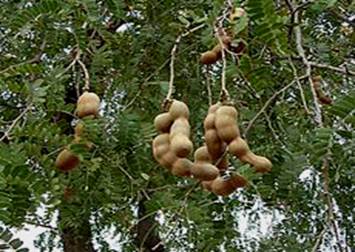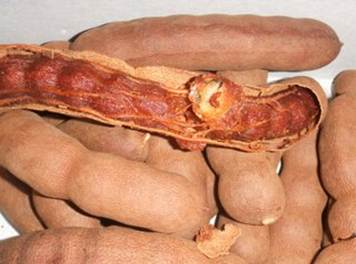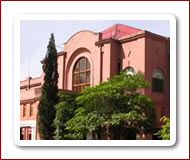| Advisory Services |
Tamarind Tree
BOTANICAL NAME:
FAMILY:
SYNONYM(S):
URDU NAME:
REGIONAL NAME:
- Bengali: Ambli, Tentul
- Persian: Tamar-I-Hindi
- Hindi: Imbli
- Pashto: Imlay
- Sanskrit: Amlika, Tintrani
- Sindhi: Gadamri
- Arabic: Tamar-I-Hindi
- Punjabi: Imbli
UNANI/TIBBI NAME:
ENGLISH NAME:
HABITAT:
- Cultivated in Punjab and Sindh
DESCRIPTION:
- An evergreen large tree 1-15 high with glabrous branched
- Leaves are 5-10 cm long, 10-20 pairs of sub sessile, oblong, glabrous
- 3-petalled yellow flowers, with pink stripes.
- Pods 10-20 cm in length, dark brown when ripe, slightly curved, compressed obovate-oblong
- 3-12 seeds are contained in the brownish pulp
PART USED:
TASTE:
TEMPERAMENT:
PERIOD OF OCCURRENCE:
- Rosy flowers appear between May and June; whearas the tree bear fruits in February
PROCEDURE & TIME OF COLLECTION:
- The pods are collected on ripening
CONSTITUENTS:
- Tartaric, Citric, Malic and Acetic Acid
- Inver sugar
- Gum
- Pectin
- Calcium
- Phosphorous
- Iron
- Sodium
- Potassium
- Thiamine
- Niacin
- Ascorbic acid
SUBSTITUTES:
- Alubukhara/ plum (Prunus domestica)
- Zarshak/barberry (berberi sanstata)
ACTIONS AND USES IN UNANI SYSTEM OF MEDICINE:
Pharmacological action:
- Refrigerant
- Digestive
- Carminative
- Laxative
- Astringent
- Aperients
Therapeutic uses:
- The fruit pulp is a good tonic the heart, liver, and stomach, intestine. It is useful in bilious vomiting
DOSES:
CORRECTIVES:
- Sugar
- Unnab/jujube (zizyphus vulgare )
IMPORTANT UNANI FORMULATIONS:
- Jawanish tamarindi
- Majoon sandal
- Hab pachlauna
ASTROLOGY:
|
|




